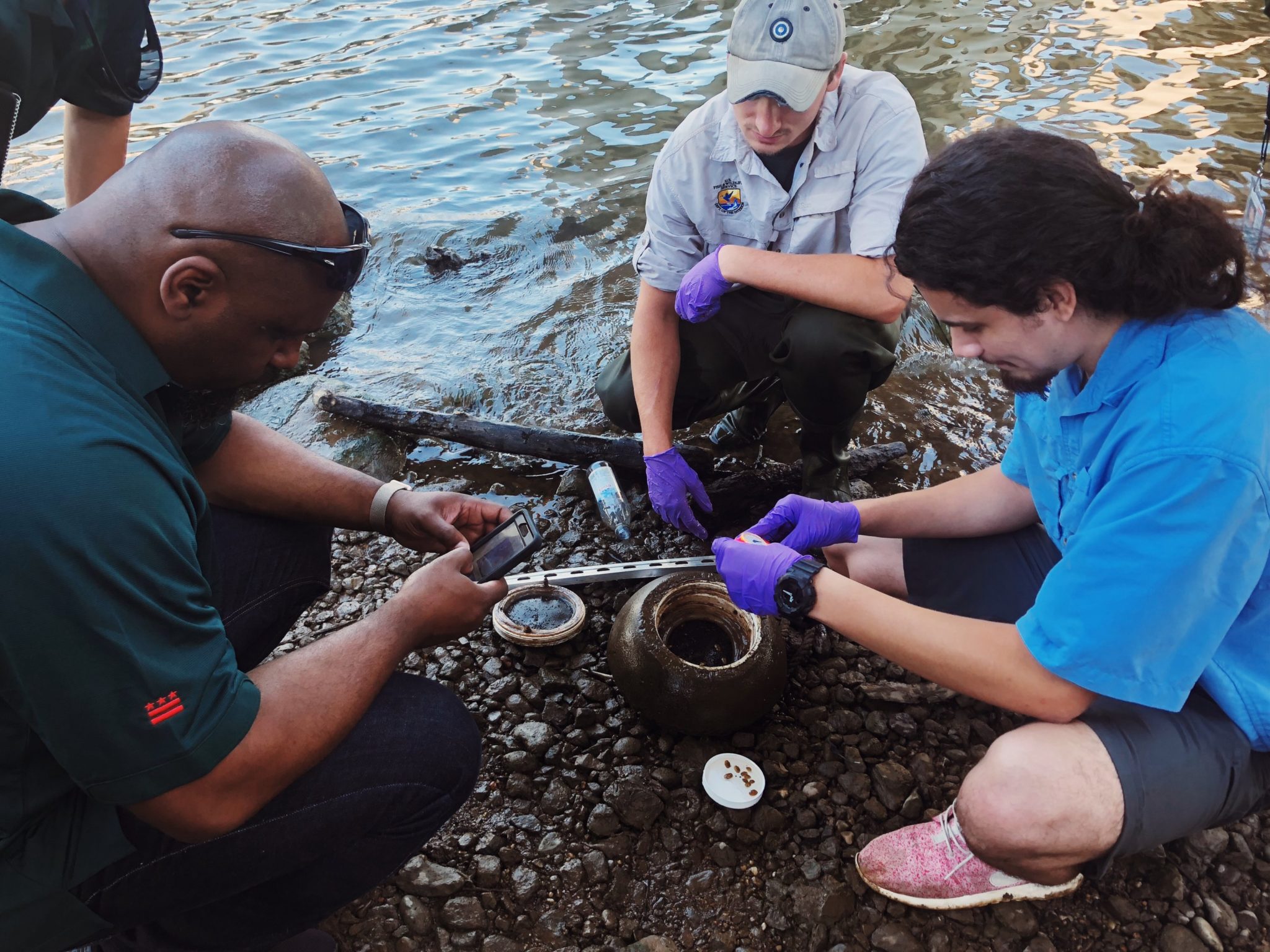It might be hard to imagine now, but the DC Department of Energy and the Environment says the Anacostia River will be swimmable and fishable in the next 14 years. How will it get there? As part of the ongoing effort to clean up the river and fulfill the promises of the Anacostia 2032 plan, the department, along with the U.S. Fish and Wildlife Service and the Anacostia Watershed Society, is attempting to outsource some of the cleanup to an unlikely crew: freshwater mussels.
In June, floating baskets and submerged silos containing dozens of baby mussels from a hatchery—each about as big as a sunflower seed—were placed in the water, from Buzzard Point to Bladensburg, as part of a 10-week study. The team has since been conducting weekly water-quality checks, and the progress so far is encouraging. On Monday, Fred Pinkney, a Fish and Wildlife environmental contaminants specialist, measured some of the mussels under the 11th Street bridge and by a pier at the Yards. Both locations showed promising growth.
If the mussels are thriving, that’s great news for the status of the river. Mussels are a biological indicator species. When they die off or fail to thrive, it means the water can’t support the ecosystem. In two more weeks—the halfway point of the 10-week study—all of the mussels will get their first official measurement.
Mussels can clean up water just by living their lives. “They filter a lot of water and get what they consider nutritious, which could be bacteria like E. coli, algae, and other particles, and then expel what they don’t eat,” says Jorge Bogantes Montero, a natural resources specialist with the Anacostia Watershed Society. An adult mussel can filter more than 10 gallons of water a day, he says.
In order to become swimmable and fishable under current EPA guidelines, the Anacostia has to overcome two main problems: sewage overflow and the inflow of sediment and pollutants into the river. Mussels help on both fronts, by reducing organic material that depletes oxygen, and filtering and collecting harmful sediments.
If the mussels in the 10-week pilot do well, it could mean that mussel beds could spread across the river bottom in the coming decades. That could have a dramatic impact: In one summer, a mussel bed in Pennsylvania removed 26 metric tons of sediment from its water. “When you have a big mussel bed, so millions of mussels, now you’ve created all kinds of diversity on the bottom. So aquatic insects, algae will grow on the mussels themselves, and fish will start to eat both the mussels and the critters attached to them,” says Pinkney. “You’re building up a more diverse ecosystem.”



















